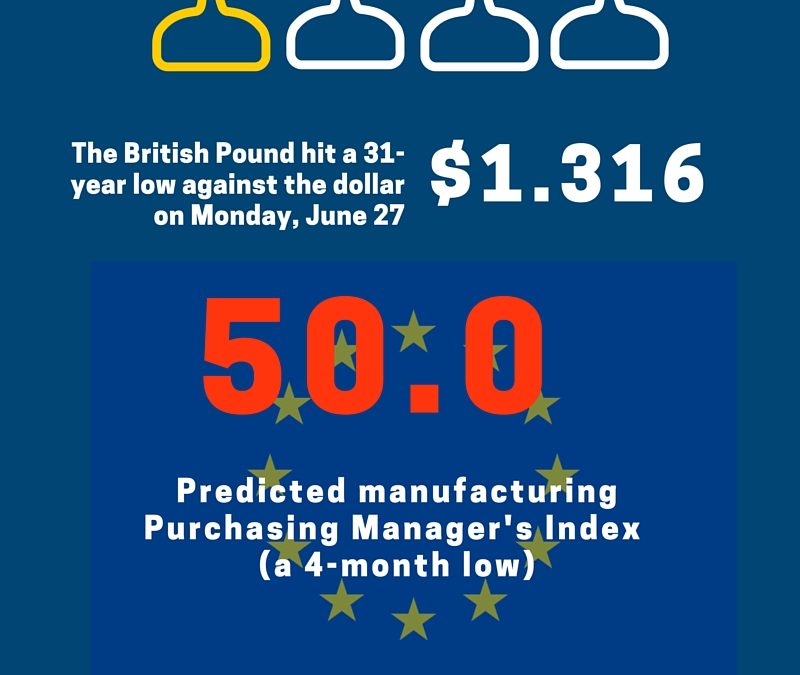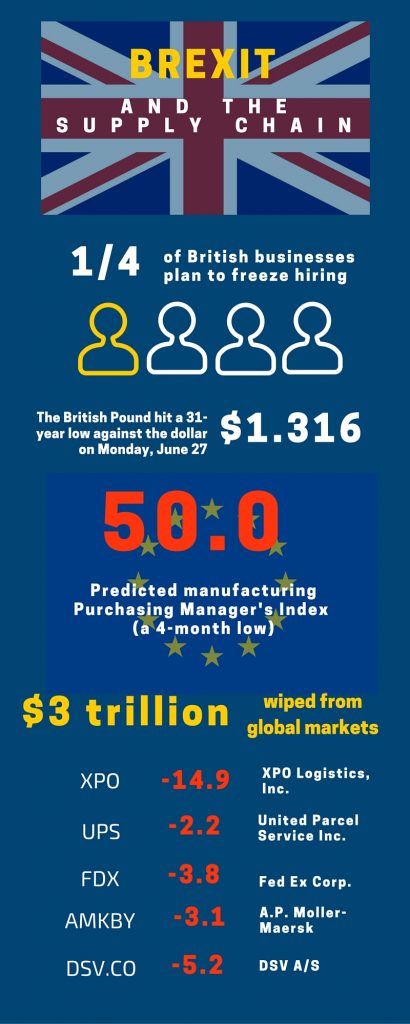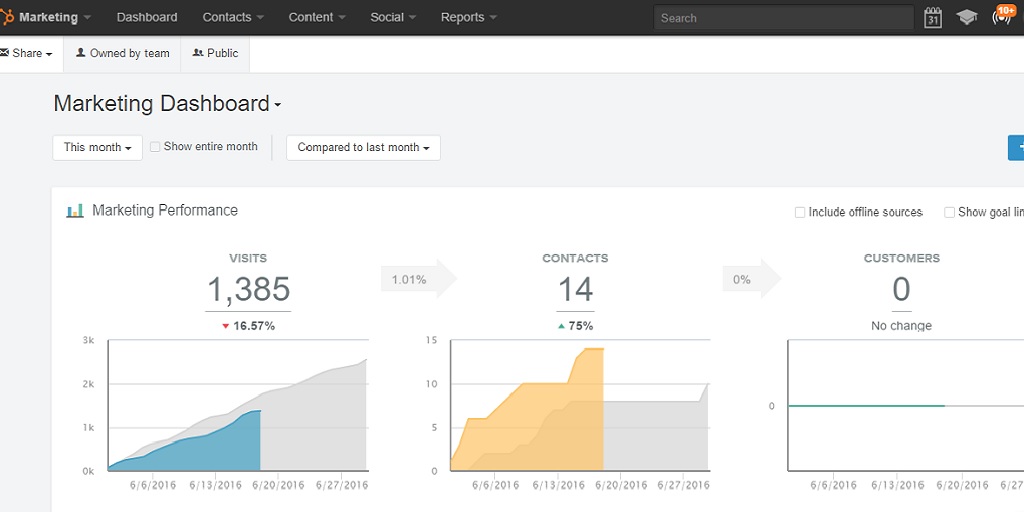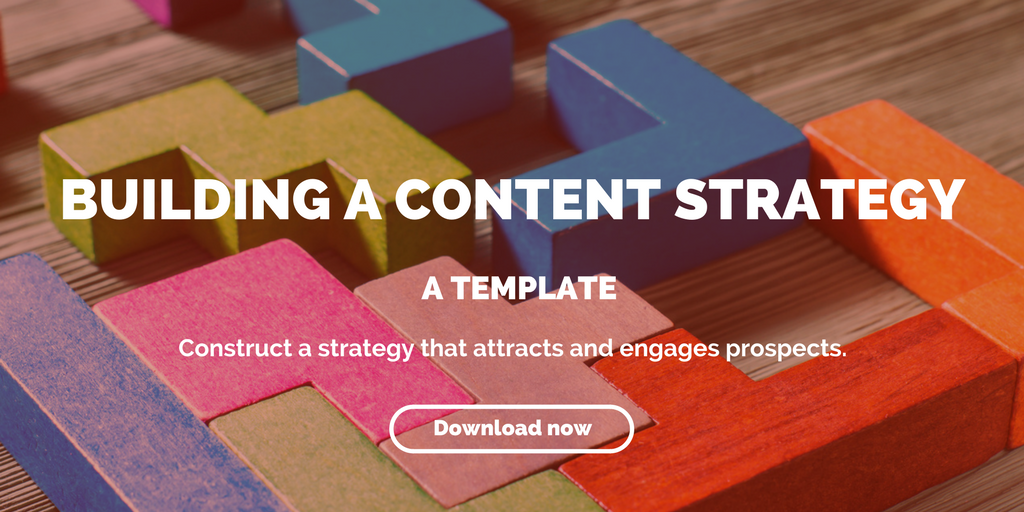
by Fronetics | Jun 30, 2016 | Blog, Current Events, Logistics, Strategy, Supply Chain
 As uncertainty pervades following Brexit, experts speculate about the impact a divorced U.K. and E.U. will have on the global supply chain.
As uncertainty pervades following Brexit, experts speculate about the impact a divorced U.K. and E.U. will have on the global supply chain.
As the Brexit vote roils markets across the globe, uncertainty looms in the air for many businesses. Even U.S.-based organizations without operations or suppliers in Europe are feeling the “significant economic repercussions” of the U.K.’s decision to leave the E.U.
Economists have been scrambling to determine the full impact of the referendum. It seems clear that all aspects of the supply chain will be affected in some way. But we won’t have a clear picture of precisely how prior to the conclusion of the two-year period of negotiation on Britain’s exit terms. Some experts speculate that it could take up to 10 years for new trading relationships with various countries to play out.
For now,“the overriding message for the European logistics and supply chain industry is one of ‘business as usual,’” says Transport Intelligence’s CEO, Prof. John Manners-Bell. “It will be in everyone’s interest to ensure that there is as little disruption to the movement of goods throughout the region as possible.”
In the meantime, here are 8 of the top analyses of Brexit’s impact on the logistics and supply chain industries.
Life after BREXIT: What are the UK’s options outside the European Union? Centre for Economic Performance, London School of Economics and Political Science
Logistics Executives Say Brexit Will Rattle European Supply Chains Wall Street Journal
What Is the Impact of Brexit on My Business? Uncertainty Ripples Through the Supply Chain Forbes
Brexit, the Next Big Disruption for the Supply Chain? Supply Chain 247
Five Models for Post-Brexit UK Trade BBC News
Brexit Wins – What’s Next for the Procurement Industry? Digital Supply Chain
Procurement, Supply Chain and Brexit: Obvious and Less Obvious Considerations Spend Matters
Brexit to Boost U.S. Exports to Asia, Depress Activity to Britain and Europe, Economist Says DC Velocity
Related posts:

by Fronetics | Jun 23, 2016 | Blog, Content Marketing, Marketing, Strategy, Supply Chain

HubSpot users also saw 3x more leads and 4.1x web visitors per month after a year using the software.
A study has found that using HubSpot for your inbound marketing can increase sales revenue by 72% in 12 months.
A 2016 MIT Sloan student analysis showed that HubSpot’s inbound marketing software provides users a substantial boost in quality leads, which converted into more sales. In year two of using the software, customers continued to see impressive increases.
The in-depth report was a compilation of customer survey responses and web data gathered over a 24-month period for HubSpot users from 2013 to 2015. It looked at three fundamental aspects of marketing methodology:
- Attracting new visitors to the user’s website
- Conversion of these visitors into customer leads
- Closing those leads into actual sales
Leveraging tools to streamline and magnify marketing and sales efforts is important for all businesses in the supply chain and logistics industries, but it can be especially important if your business is small, or has limited resources. HubSpot proved to be a competitive solution, with cost-effective results that increased leads, customers, and revenue.
Report highlights
Attracting new customers
- Users averaged 3x more leads per month after a year.
- Websites averaged 4.1x more visitors per month after a year.
Conversion of website visitors into leads
- Approximately 83% of the HubSpot customers experienced an increase in their conversion rate of leads into customers.
- Size of the business did not matter; all saw significant increases in site traffic and lead conversion rates.
Closing those leads into sales
- 72% of HubSpot customers saw an increase in sales revenue in one year.
Other findings focused on substantial support in meeting goals and the ease of attracting the right customer persona for optimum results.
- 96 % of customers surveyed said that HubSpot helped them meet their marketing goals.
- 68% of customer respondents felt that their efforts generated better quality leads while using HubSpot.
- Increased customer satisfaction was reported by 46% of HubSpot users since they began using the program.
Is HubSpot right for your business?
HubSpot is a marketing platform that takes all of the inbound marketing methods that were once separate services and consolidates them into one integrated software package. It provides marketing analytics, lead intelligence, A/B landing page testing, CRM integration, email service integration, eCommerce integration, and API integration.
From one location, you can blog, tweet, optimize, then capture and nurture leads. It drives the right customers to you using extensive research specific to your industry. It pinpoints your competitors and potential customers, including their typical pain points, interests, and questions.
A separate 12-month study conducted by Overgo involving both B2B and B2C businesses compared companies using HubSpot to those who did not. It found:
- An average increase of 170% in organic traffic after one year, whereas those using HubSpot saw an average organic traffic increase of 590%.
- HubSpot received 125% more (B2B) and 294% more (B2C) leads than companies not using HubSpot. (Several of the B2B companies received fewer leads because their targets are multi-million dollar deals, a much smaller avenue of opportunity.)
The difference was attributed to the tools HubSpot offers its customers, which include:
- Ranking opportunities – a feature that shows which keywords offer your business an opportunity to get ranked on the first page of search results.
- Conversion opportunities – shows which keywords are attracting a lot of traffic but not converting, then suggests ways to increase conversion.
- Long-tail opportunities – suggests keywords where ranking could improve substantially if you add a certain word or phrase.
- Competitors – compares your site’s ranking and search volume to your competitors.
- Campaigns – helps organize keywords into campaigns for tracking and measurement.
HubSpot’s inbound marketing software has consistently provided a relatively fast and high return on investment for the majority of B2B or B2C companies, no matter their size.
Related posts:

by Fronetics | Jun 22, 2016 | Blog, Customer Service, Logistics, Strategy, Supply Chain

Source: Amazon
Today’s customers expect value, quality, and speed. Focusing on how your can deliver on those promises is what will win you business.
Remember that great advice: focus on yourself, not on what others are doing. According to an article in Harvard Business Review, the greatest challenge your company faces today is not keeping up with your competitors, but keeping up with your customers’ expectations.
This is not to discount the importance of watching business trends and monitoring the competition. But, your primary focus should be on what your customers need and expect and if you are providing it.
What do customers expect?
In today’s digital age, your customers’ expectations wash away traditional boundaries. According to a report in The Economist Group, customers compare and contrast their digital experiences across all industries, even those that offer totally different products or services.
Do you stand out above the crowd? Ask yourself this:
- Do you offer value, quality, and speed? Customers used to be willing to trade off one to get the other. Those days are gone. Today’s customer dictates that they want it all: lowest price, good quality, and fast delivery.
- Do you offer what the “big guy” does in terms of product, service, and ease, but with the care of a small business people trust? The size of your business does not matter in a digital marketplace. But, you must offer the scope, scale, and influence associated with being big, while maintaining the creativity and personal service characteristic of smaller businesses.
- Do you focus on helping customers to meet their objectives and needs? Do you share a purpose? According to an article in Harvard Business Review, what you provide ideally is not something you are going to do to them, or for them, but with them. It’s a journey you take together.
- Do you offer an intuitive sales funnel? Customers expect you to be where they are, deliver what they want, when they want it, and how they want it. If they are shopping your site, leave, and come back later, they want to pick up where they left off. They demand intuitive ease and ultimate convenience while they shop.
- Do you offer personalized customer experiences? Remember what happened every time Norm entered that television bar called Cheers? Your customers want you to know their name when they return, as well as their unique individual preferences, and they also want you to make relevant recommendations for products or services they may like.
- Do your social media interactions inform and help customers? Your posts should not deliver a sales pitch. Social media content should be educational, entertaining, or support the needs and interests of your audience.
There are new rules businesses must follow today in creating the ideal digital journey for their customers. Focus your attention on exceeding customer expectations and answering to their unique needs, not on your competition.
Related posts:

by Fronetics | Jun 16, 2016 | Blog, Content Marketing, Manufacturing & Distribution, Marketing, Strategy, Supply Chain

A recent report produced by the Content Marketing Institute and MarketingProfs, and sponsored by Brightcove, found that 81% percent of B2B manufacturers in the United States use content marketing. The same report found that the majority of manufacturers do not believe their organization is effective at content marketing.
What are organizations who are not effective missing out on? A lot.
An effective content marketing strategy can:
- Build brand awareness
- Position your company as a thought leader within the industry
- Increase engagement with customers, partners, and stakeholders
- Educate and inform customers, partners, and stakeholders
- Build trust
- Allow you to manage your reputation
- Generate leads
How can your organization realize these benefits?
The first step is documenting your strategy. The report found that organizations with a documented strategy in place were 3x more likely to report that their content marketing strategy was effective than organizations without a documented strategy.
Define your goals
Why does your company want to create content? Do you want to shorten your sales cycle? Increase leads? Build brand awareness? You don’t want your content to be just stuff. You don’t want content to be ineffective. Therefore it is important to define what it is you want your content to do for your company.
Define your audience
Who is your target audience? What are their needs? What are their goals? What are their pain points? What do they value most? Where do they go for information? Take your time. Be honest. If you identify and define your audience correctly you will be more likely to reach your target audience and engage them than if you get this step wrong.
Define your metrics
Determine how you are going to track and measure success. Define the metrics that you will track on a daily, weekly, monthly, and yearly basis.
Identify the right distribution channels
When it comes to content, distribution is essential – your content will not reach your target audience and will not be read unless it is distributed. Take the time to identify the distribution channels that are right fit for your company, your content, and your goals.
Create a publishing calendar
A publishing or editorial calendar provides you with a framework to create and distribute content. It helps you create content that is consistent, that is quality, and is tailored to your company’s goals. It is also helpful in terms of managing workflows, meeting deadlines, and managing writer’s block.
Create content
Valuable and relevant content is not a sales pitch. It is not content that pushes your products and services. Rather, it is content that communicates valuable information to customers and prospects so that they have the knowledge to make better informed decisions. Moreover, it is content that establishes your business as a reliable source of knowledge – as the thought-leader within the industry. Be thoughtful when you create content.
Curate content
Content will help you grow your business; by creating and distributing valuable and relevant content in a strategic and consistent manner you can drive profitable customer action. But, it’s not all about you. It’s not all about the content you and/or your business creates. Here’s why content curation is an essential component of a successful content strategy. The internet is a fire hose stream of content. Being able to navigate the deluge of content and identify the content that is valuable to your customers and to your business is essential. The process of identifying and sharing this content is content curation. By consistently being able to identify, make sense of, and share content that is important and relevant to your customers and to your industry you will establish your business as a thought leader and a trusted resource.
Distribute content
Distribute your content via your target distribution channels. Distribute the content consistently over time and at the right time.
Engage with customers and prospects
Once your content has been distributed, engage with your audience. Respond to comments, respond to questions, and provide clarification. Make your content more than words – make it a relationship.
Track and analyze metrics
Track and analyze your metrics on a daily, weekly, monthly, and annual basis. Take a look at what is working and what is not. By tracking and analyzing your metrics you can see, for example, what type of content is most effective and which distribution channels are helping you achieve your goals.
Make adjustments as needed
Your strategy should not be set in stone. Your strategy should be flexible. Look at your metrics, look at the feedback you are getting through your engagement with customers and prospects – make adjustments to your strategy as needed. Remember that when it comes to content it is important to think marathon not sprint. An effective content strategy requires patience and determination. Many companies make the mistake of giving up on a content strategy too early; make a long-term commitment to your strategy.
This post originally appeared on Electronics Purchasing Strategies.
You may also like:


by Fronetics | Jun 14, 2016 | Blog, Content Marketing, Logistics, Marketing, Supply Chain
Try writing about these topics on your supply chain blog to engage customers.
Content is an important part of many logistics and supply chain companies’ marketing plans. Yet nearly half (45%) say creating quality content on a consistent basis is their biggest challenge.
If your business is part of the 90% that produces some or all content in-house, you have likely struggled with this from time to time. You know that you shouldn’t pitch your products. But, then, what are you supposed to say on your blog?
Here are some thoughts on what to write about:
1) Offer something of value.
Do you have expert advice on a particular topic? Is there something about your products or your people that would be entertaining to your audience? Do you have access to top-of-their-field specialists that could discuss a particular issue?
2) Share your mission.
What is your company’s mission statement? Pick one aspect and describe why this is important to you/society, or illustrate how your company is living up to it. For example, a green transportation company might create an infographic about the industry’s impact on the environment.
3) Tell a story.
What anecdotes can you share about your business? Are their employees with exceptional stories to share? Customers whose narrative bears repeating? What stories illustrate something about your business? For example, Southwest Airlines’ Nuts About Southwest blog regularly shares customer stories — tugging at the heartstrings with nearly missed births, marriage proposals, and, of course, adorable animals — that illustrate the airline’s commitment to customer service and on-time arrivals.
Related posts:

by Fronetics | May 30, 2016 | Blog, Content Marketing, Marketing, Supply Chain

Fronetics’ new guide offers a road map for content production that will help grow your business.
Content marketing is one of the most effective ways to generate leads and grow your business. Yet only 30% of B2B marketers define their content marketing programs as successful. Time and again, they cite producing effective content as their main challenge.
Consider this: 27 million pieces of content are shared every day, and most of it is crap. For your content to be effective — meaning your content attracts your target audience and drives profitable customer action — it must stand out, really stand out, among the masses.
Fronetics has developed a guide to help companies in the logistics and supply chain industries create effective content. On Writing Good Content : A Guide for the Logistics and Supply Chain Industries provides a road map to producing content that generates leads and drives new business. With this guide, you will:
- Learn the basic principles of good content
- Identify potential content creators within your organization
- Brainstorm ideas for original content
- Receive writing prompts that will get you started producing the kind of content that will resonate best with your target audience
Start creating effective content today by downloading the free guide below.

Related posts:

 As uncertainty pervades following Brexit, experts speculate about the impact a divorced U.K. and E.U. will have on the global supply chain.
As uncertainty pervades following Brexit, experts speculate about the impact a divorced U.K. and E.U. will have on the global supply chain.








